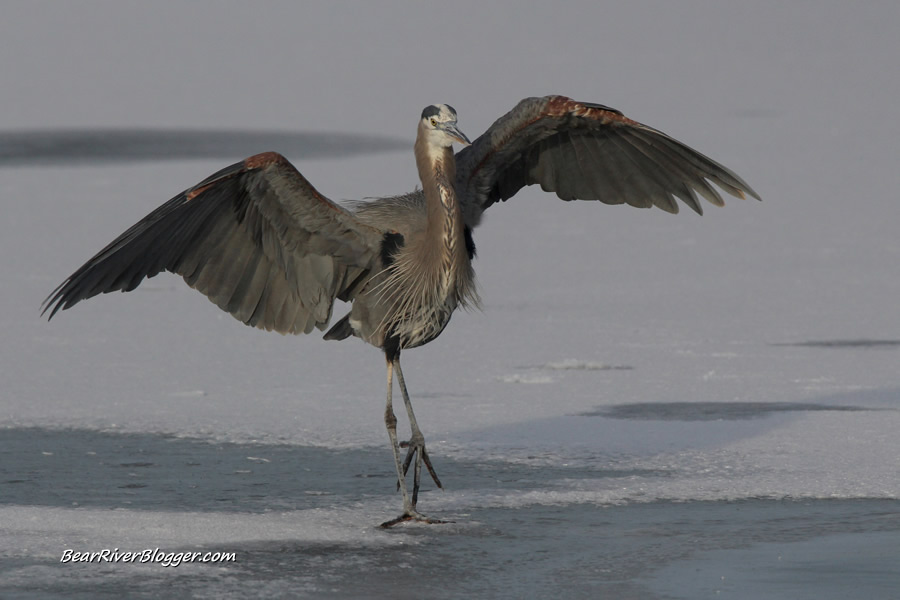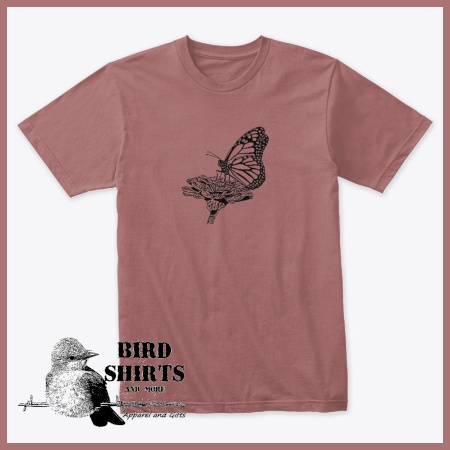We’ve all heard the phrase “Here today, Gone Tomorrow” haven’t we?
Well, if you’re a bird watcher you most certainly have some experience with the phrase to some degree, especially if you do any birding during the winter months.
Today was a stark reminder of just how fickle winter bird watching can be, especially when you’re following great blue herons in a cold, wintery climate like I do here in northern Utah.
A couple days ago, Saturday to be exact, I was on the Bear River Migratory Bird Refuge auto tour route and happened across my favorite of all winter bird watching scenes, great blue herons, gulls, and goldeneye ducks all congregating on small pockets of open water pestering one another over fish.
It’s a scenario that plays out on the Bear River Migratory Bird Refuge for a few weeks each winter, usually in early February when the refuge auto tour route is completely frozen over except for a small portion on the very southern end.
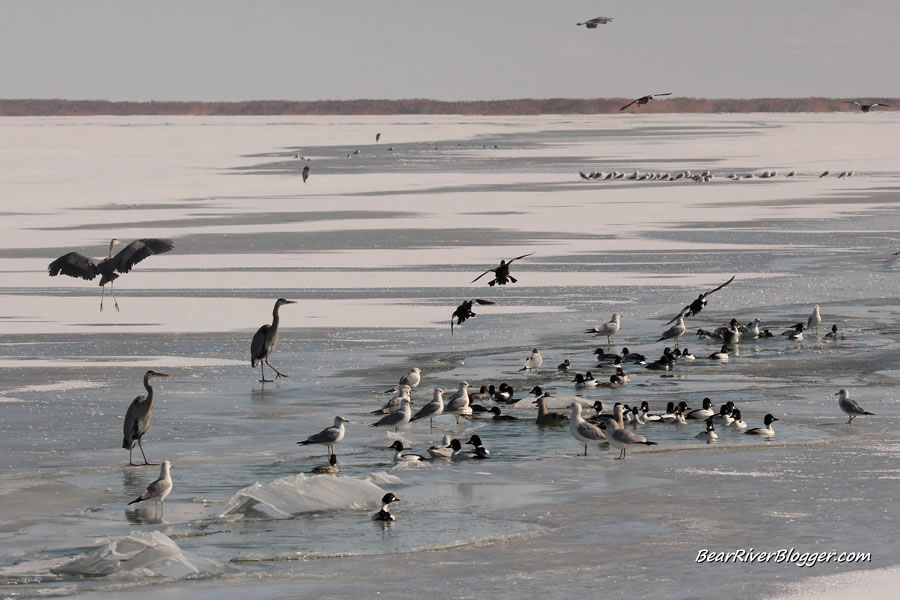
Each winter, long, narrow stretches of water open up on the southern end of the refuge auto tour route and these small pockets of water are bird magnets for a few weeks or so, especially for great blue herons who come to this particular spot for a specific reason, fish.
For years, I’ve wondered how great blue herons can stay in freezing climates where very little open water exists, making the job of a fish-eating bird seemingly impossible as it were.
Great blue herons in Utah don’t migrate but stay around the Great Salt Lake wetlands and find ways to adjust to the harsh winter climate.
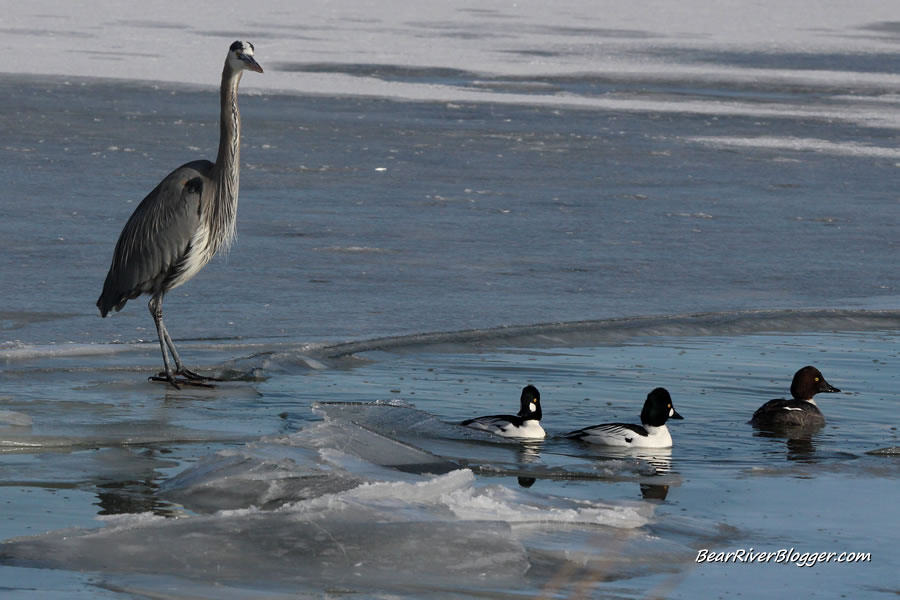
One way great blue herons have adapted to our climate is by congregating around open pockets of water and stealing fish from other birds that dive under the ice, such as pied-billed grebes, American coots, and goldeneye ducks.
This is what was playing out on Saturday, in fact, when I counted over 75 great blue herons in loose groups all over the ice on the southern end of the Bear River Migratory Bird Refuge auto tour route.
I literally spent hours watching great blue herons, gulls, and goldeneye ducks squabble over the small fish each time one of the ducks came to the surface with a meal in its beak.
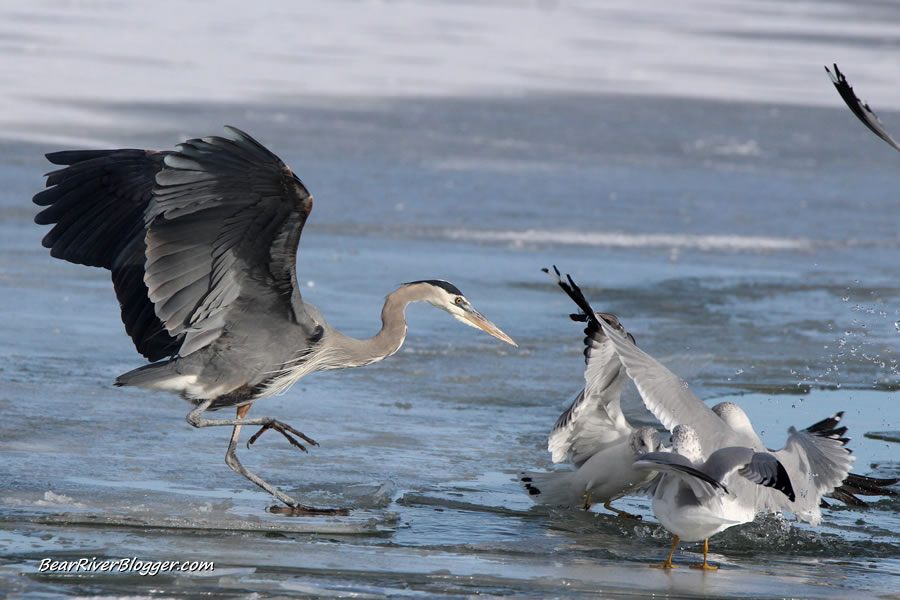
The herons and gulls would rush towards and chase the ducks in an effort to cause them to drop the fish, giving the much larger birds a quick and easy meal.
And from what I could see, the great blue herons were much higher on the pecking order than the gulls, getting most of the fish that were dropped and scavenged.
I was very surprised when 4 black-crowned night herons showed up and also fought the great blue herons for some of the fish.
Never before have I seen other types of herons participate in this winter spectacle.
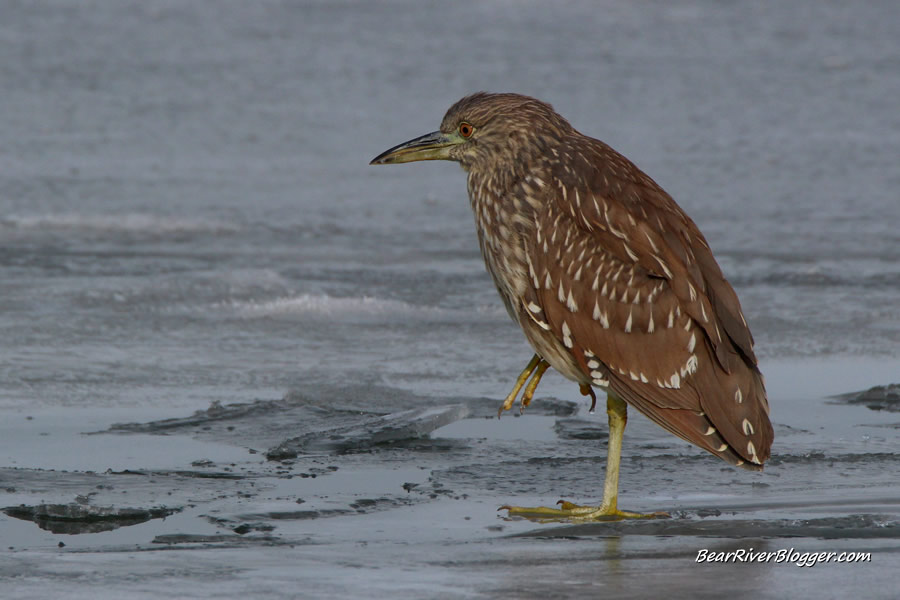
But that is why bird watching is so interesting and entertaining, you just never know what you’ll find when you go and you won’t see anything if you stay home.
This winter scene with the herons, gulls, and diver ducks is such an incredible scenario when you stop and think about it.
Watch what is actually going on with how the great blue herons and gulls are able to obtain much-needed food during the coldest parts of winter like this.
It’s a testament to just how intelligent birds truly are and how resilient and resourceful they can be when there’s a need for survival.
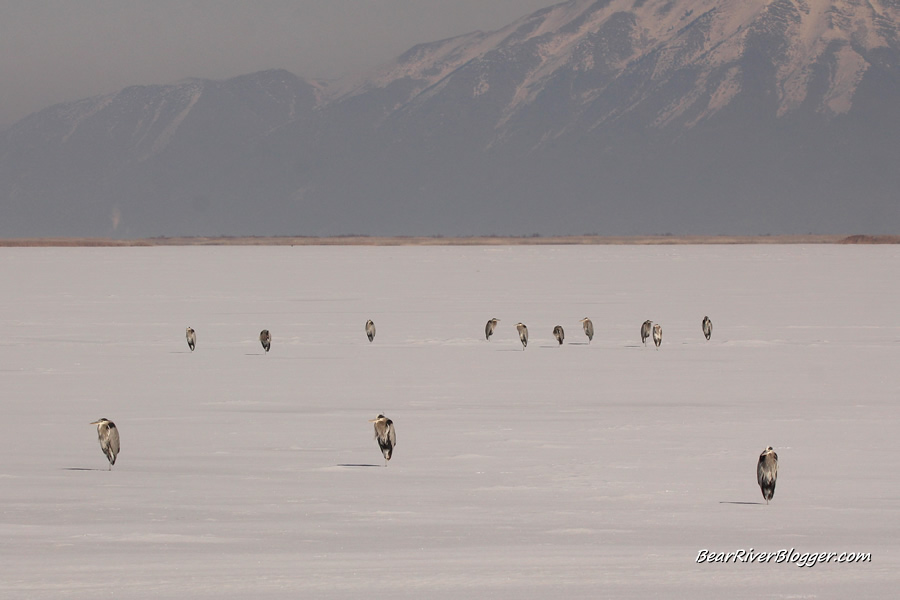
I have literally been waiting on pins and needles all winter for this scenario to come to fruition on the Bear River Bird Refuge and planned on coming back today, Monday, to do some more photographing and enjoy the winter scene while I still can.
But as I mentioned in the title, winter bird watching can be quite frustrating, to say the least, and today I was once again reminded of that fact.
This morning when I arrived on the scene, all the great blue herons were gone and only the gulls and goldeneye ducks were still on the southern end of the auto tour route.
Most of the open pockets of water, however, had frozen over again, leaving only a tiny portion of what was available Saturday to attract what few ducks and gulls that were still there.
That is how winter bird watching is, mind you, when a lot of it depends on the weather.

Even though it is still the dreads of winter, I didn’t expect to go from 75 great blue herons to zero herons in just 2 days, but that is exactly what happened so I only stayed around for a few minutes and headed home.
Winter bird-watching can be spectacular but it can also be quite frustrating as well.
It’s just part of birding where some days you win and other days, well, you lose.
But I will say this, however, if I got to see all the birds I wanted every time I went out on a bird-watching trip, I would soon get bored and lost interest in bird watching so even though days like today are a bit of a letdown, all in all, it does keep us birders coming back again for another day.
I will say that today wasn’t a total loss as I did see a pair of sandhill cranes, the first of the year, in fact, on the northern end of the Bear River Migratory Bird Refuge auto tour route.
And I am certain the small strips of water will open up again as we are supposed to warm up a tiny bit this week.
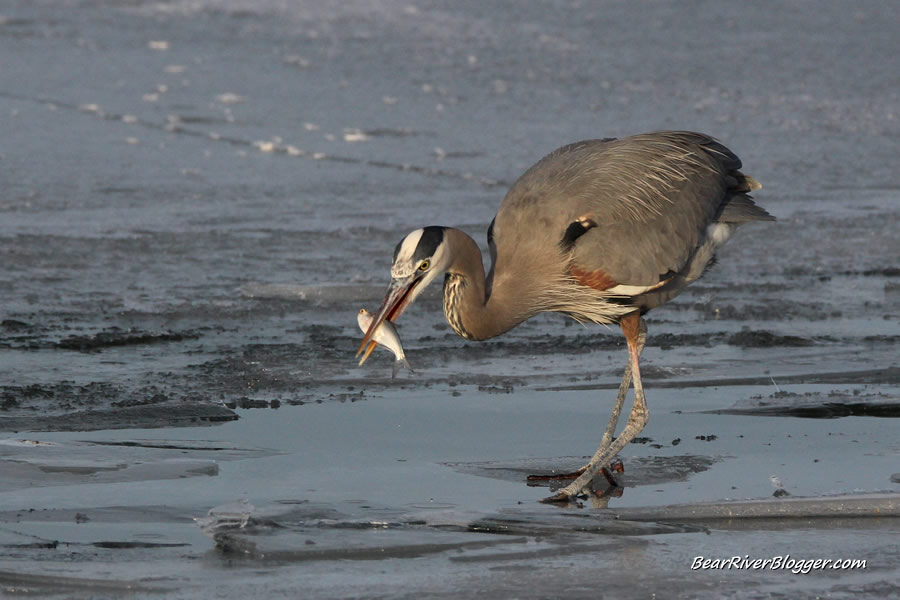
So I just have to be patient and wait it out as this most fascinating of scenarios should return once more before winter bids us a long-awaited farewell.
If you are a bird watcher like I am, I offer you to head on over to our subscribe page and sign up for email notifications for future blog posts about the Bear River Migratory Bird Refuge and all the other places I frequent looking for birds.
We also have a small but growing YouTube channel where we occasionally post video updates about the Bear River Migratory Bird Refuge when conditions allow us to make a short video.
American White Pelican Classic T-shirt, available in a variety of colors and styles. Visit our online store for more information or to make a purchase, and use coupon code save20 for 20% off for a limited time.


